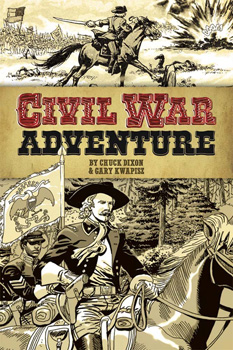|
Historical war comics ride again: Civil War Adventure by Dover Publications
The primary recurrent fictional characters are from a southern farm, who appear in several of the stories as the war progresses. Each chapter may be read as an individual story, however, so there is also an anthology quality to the production, enhanced by the art contributions of contributing artists Esteve Polls, Enrique Villigran, Silvestre and Erik Burnham and letterer Dave Rothe. Most of the vignettes are told from a Southern perspective, but northern heroes are included as well, such as George Armstrong Custer. Several other important figures are highlighted, notably southern raider John Singleton Mosby and his legendary encounter with Union General Edwin Stoughton. The story and art are realistic and not idealized, and portray the true privation and horror of war, yet there is nothing gratuitous about the depictions. It is a work for a more mature audience, including a mature juvenile readership. As entertainment, it is not meant to replace scholarly works, but may serve as an introduction to the topic; in fact, the final two pages list 'Further Reading' on the Shenandoah Campaign as well as a list of official civil war visitor centers. This is the type of introduction to learning that should be applauded and encouraged if comic art is to continue to escape the repetitive superhero genre. The writing, primarily by famed scribe Dixon, includes some twist endings, with a macabre or wry sense of humor, very much in the tradition of the old E.C. Comics. An influence on the art seems to be the great John Severin; perhaps this reviewer is mistaken, for the similarity is not overt. But illustrator Kwapisz is at his best when he uses the brush more than the pen and lets high contrast and low detail of the night scenes take on a drama that unleashes the imagination of the viewer. The artist is a skilled organizer and researcher and much qualified hard work went into this impressive labor: but his work achieves a real brilliance when influences seem to disappear and moodiness of the shadows takes over. This book is very moderately priced and printed in the USA. The editorial
staff at Dover Graphic Novels deserve continued respect for bringing
high quality writing and drawing to a wide audience, beyond typical
comic fandom. We eagerly await their next foray into the historical
field. Back to Examiner Articles
| Next Article |
